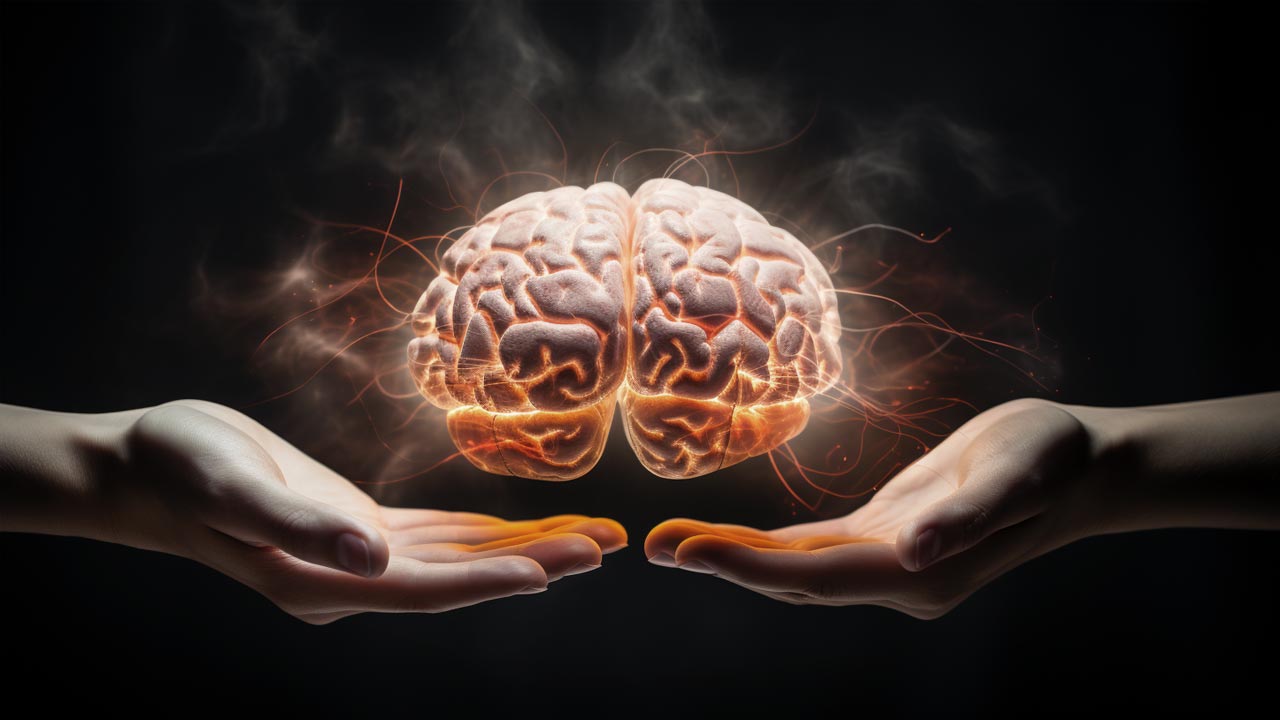If you’d like to start this series from the beginning, start with The Power of Persuasion Part 1
The Power of Persuasion Part 6. Digital Age and Social Media
The digital age has revolutionized the way we access information, communicate, and interact with one another. Central to this transformation is the emergence of social media platforms that have profoundly impacted various aspects of modern life. From communication to marketing and activism, social media plays a significant role in shaping public opinion and cultural trends. Understanding the implications of the digital age and social media is vital in navigating the complexities of the online world. Let’s explore each aspect in detail:
Table of Contents
- Introduction to the Digital Age and Social Media
- The Evolution of the Digital Age
- Impact of Social Media on Communication
- Social Media and Cultural Trends
- Social Media Marketing
- Challenges and Concerns in the Digital Age
- Social Media and Mental Health
- Digital Citizenship and Media Literacy
- Social Media and Politics
- The Future of Social Media and Digital Technology
- Social Impact and Responsibility
- Case Studies and Real-World Examples
- Top 10 Frequently Asked Questions
- Final Thoughts
- Sources
Introduction to the Digital Age and Social Media
Defining the Digital Age
The Digital Age, often referred to as the Information Age, marks a significant shift in human history where digital technology becomes the primary means of information creation, distribution, and reception. This era, beginning in the late 20th century, has seen the rapid evolution of digital technology, fundamentally altering how people interact, work, and live. The hallmark of this age is the transition from traditional industrial economies to economies based on information technology.
Emergence of Social Media
Social media emerged as a natural progression of the Internet’s ability to connect people. It began as a platform for personal interaction and quickly evolved into a complex network influencing every aspect of modern life. Platforms like Facebook, Twitter, Instagram, and LinkedIn redefined communication, offering new ways for individuals to share their lives, opinions, and experiences with a global audience.
Characteristics of the Digital Age
- Instant Access to Information: The Internet has made information more accessible than ever, allowing for instant communication and the sharing of knowledge across the globe.
- Interconnectivity: The world is more connected, enabling people to engage with diverse cultures and ideas.
- Digital Natives: A new generation, born into the digital world, navigates these spaces with ease, impacting social structures and expectations.
- Evolving Communication: Traditional forms of communication have been supplemented (and in some cases, replaced) by digital interactions.
Social Media as a Communication Revolution
Social media has revolutionized communication by:
- Facilitating Real-Time Interaction: Social media allows for immediate and interactive communication, transcending geographical boundaries.
- Personal Expression and Identity: It provides a platform for personal expression, influencing identity formation and presentation.
- Community Building: Online communities form around shared interests, transcending traditional societal divisions.
- New Channels for Information Dissemination: Social media has become a vital source of news and information, albeit raising concerns about accuracy and biases.
The Synergy of Technology and Social Interaction
The Digital Age and social media are intrinsically linked; advances in technology drive social media’s evolution and vice versa. This synergy has created a dynamic environment where:
- User-Generated Content dominates, shifting the control of information flow from traditional gatekeepers to individuals.
- Mobile Connectivity enhances social media’s reach, with smartphones and tablets facilitating constant online presence.
- Digital Literacy becomes essential, as navigating the digital world requires new skills and understanding
The Evolution of the Digital Age
The Digital Age represents a profound transformation in how society operates, communicates, and progresses. This evolution is marked by several key developments:
Internet and Connectivity
- Birth of the Internet: Originating as a military and academic network in the late 20th century, the Internet rapidly evolved into a public utility. Its growth facilitated unparalleled connectivity, making global communication instantaneous and accessible.
- The World Wide Web: Tim Berners-Lee’s invention in 1989 revolutionized information sharing, leading to the explosive growth of web content and accessibility.
- Broadband and Wi-Fi: The transition from dial-up to broadband and the advent of Wi-Fi drastically increased Internet speed and accessibility, catalyzing the proliferation of online content and services.
Proliferation of Smart Devices
- Rise of Smartphones and Tablets: The launch of smartphones, notably the iPhone in 2007, and subsequent tablets, transformed the digital landscape by putting powerful, internet-enabled devices in the hands of millions.
- Wearable Technology: Devices like smartwatches and fitness trackers further integrated digital technology into daily life, emphasizing convenience and personal data tracking.
- The Internet of Things (IoT): The expansion of internet connectivity to everyday objects (e.g., home appliances, vehicles) has further blurred the lines between the physical and digital worlds.
Rise of Social Media
- Early Platforms: Early social media platforms like Friendster and MySpace laid the groundwork for online social networking, focusing on personal profiles and friend connections.
- Facebook and Twitter: Platforms like Facebook and Twitter transformed the landscape, offering new ways to connect, share, and consume information, reshaping public discourse.
- Diversification: The social media landscape diversified with platforms like Instagram, Snapchat, and TikTok, each offering unique modes of interaction and content sharing.
Impact of Social Media on Communication
The advent of social media has brought about a paradigm shift in the way we communicate. This impact can be dissected into several key areas:
Instant Communication
- Real-Time Interaction: Social media platforms have made it possible to communicate in real-time, breaking down temporal and spatial barriers. This immediacy has changed expectations for how quickly we receive responses and information.
- Direct and Instant Messaging: Features like direct messages (DMs), tweets, and status updates allow for instant and direct communication, fostering a sense of immediacy and spontaneity in interactions.
Global Reach
- Connecting Across Borders: Social media has globalized communication, enabling connections and interactions across different countries and cultures. This has made the world seem smaller and more interconnected.
- Cross-Cultural Exchange: It facilitates cross-cultural dialogues and exchange, leading to greater awareness and understanding of global perspectives and issues.
The Spread of Information
- Information Sharing: Social media has become a key platform for disseminating and receiving news and information. Its algorithms often amplify popular content, affecting what information is seen and shared.
- Viral Content: The concept of virality, where content can rapidly spread to millions of users, illustrates social media’s power in information dissemination. This can be beneficial for awareness campaigns but also problematic for misinformation.
- Echo Chambers and Filter Bubbles: Social media can create echo chambers where users are exposed primarily to views that mirror their own, potentially limiting exposure to diverse perspectives.
Changes in Communication Style
- Brevity and Conciseness: The character limits and fast-paced nature of social media platforms encourage more concise and to-the-point communication.
- Use of Multimedia: The integration of images, videos, and emojis in social media communication has enriched the way we express ourselves, moving beyond text-based interactions.
Impact on Journalism and News
- Citizen Journalism: Social media has given rise to citizen journalism, where ordinary users report and comment on news events, challenging traditional journalism’s gatekeeping role.
- News Consumption Patterns: More people are now getting their news from social media rather than traditional news sources, which has implications for the speed and accuracy of news dissemination.
Personal and Professional Networking
- Building Connections: Social media platforms, particularly professional networks like LinkedIn, have become vital for career networking and job searching.
- Community Building: They enable individuals to find and engage with communities of shared interests, often leading to meaningful personal and professional relationships.
Challenges and Concerns
- Misinformation and Fake News: The rapid spread of information on social media can lead to the dissemination of false or misleading information.
- Privacy Issues: Concerns over data privacy and how personal information is used and shared on these platforms are growing.
- Impact on Language and Communication Skills: The reliance on digital communication can affect face-to-face communication skills and language use.
Social Media and Cultural Trends
Social media has become a dominant force in shaping and reflecting cultural trends. Its influence can be seen in various aspects:
Influencers and Trendsetters
- Rise of Influencers: Social media has given rise to influencers, individuals who have the power to affect the purchasing decisions and opinions of others due to their authority, knowledge, position, or relationship with their audience. These influencers often set trends in fashion, lifestyle, and other areas.
- Micro-Influencers: These are individuals with smaller, more niche followings who can have a more engaged and targeted audience, often leading trends in specific communities or industries.
- Celebrity Influence: Celebrities use social media to directly engage with fans, significantly impacting fan behavior and opinions. Their endorsements and personal styles can become instant trends.
Viral Challenges and Memes
- Viral Challenges: Social media platforms have popularized various viral challenges that often combine humor, creativity, and social interaction. These challenges can spread rapidly across the globe, becoming cultural phenomena.
- Memes as Cultural Commentary: Memes, which are humorous images, videos, or texts that are copied and spread rapidly by internet users, have become a way for people to comment on and critique cultural events, politics, and societal norms.
- Participatory Culture: These trends exemplify a participatory culture where users are actively involved in creating and circulating content, rather than passively consuming it.
Cultural Movements and Activism
- Social Activism: Social media has become a crucial platform for activism and raising awareness about various social, political, and environmental issues. Movements like #BlackLivesMatter and #MeToo have gained international attention through social media.
- Cultural Exchange and Diversity: It facilitates the exchange of cultural practices and ideas, promoting diversity and inclusivity by giving a voice to marginalized groups.
- Community Building: Social media helps in building communities around cultural practices, interests, and movements, fostering a sense of belonging and shared identity.
Fashion and Lifestyle Trends
- Fashion Forward: Social media platforms, particularly Instagram and Pinterest, have a significant impact on fashion trends, with users often looking to these platforms for inspiration.
- Lifestyle and Wellness Trends: Trends related to health, wellness, and lifestyle are often influenced and amplified by social media content and influencers.
Food and Culinary Influences
- Food Trends: Platforms like Instagram have transformed food culture, with the visual appeal of food becoming as important as its taste, leading to trends like ‘foodstagramming’ and ‘insta-worthy’ meals.
- Culinary Exploration: Social media has also encouraged culinary exploration and the sharing of diverse food practices and recipes.
Impact on Language and Communication
- Evolving Language: The language used on social media, including abbreviations, memes, and emojis, has influenced everyday language and communication styles.
- New Forms of Expression: Social media has introduced new ways of expressing emotions, opinions, and ideas through digital means.
Social Media Marketing
Social media marketing has become an essential tool for businesses and brands in the digital age. Its impact and strategies encompass several key areas:
Influence of Social Media on Consumer Behavior
- Shaping Buying Decisions: Social media significantly influences consumer behavior. Recommendations, reviews, and influencer endorsements on these platforms can sway purchasing decisions.
- Brand Discovery and Awareness: Many consumers discover new brands and products through social media ads and posts, making it a crucial platform for businesses to increase visibility.
- Customer Engagement and Feedback: Social media allows for direct interaction between brands and customers, providing valuable feedback and fostering customer loyalty.
Social Media Advertising Strategies
- Targeted Advertising: Social media platforms offer sophisticated targeting options based on user demographics, interests, and behavior, allowing brands to reach their desired audience more effectively.
- Content Marketing: Creating engaging, relevant, and valuable content to attract and retain a clearly defined audience. This can include blog posts, videos, podcasts, and social media posts.
- Influencer Collaborations: Partnering with social media influencers to promote products or services to their followers.
- Interactive Campaigns: Utilizing polls, contests, and interactive stories to engage users and encourage participation.
Engagement and Brand Loyalty
- Building Relationships: Regular interaction with customers on social media helps build relationships and loyalty. Brands often use these platforms to provide customer service, answer queries, and engage in conversations.
- Community Management: Creating and managing online communities around a brand or product can foster a sense of belonging among consumers.
- User-Generated Content: Encouraging customers to share their own content related to a brand (like photos or stories) can enhance engagement and trust.
Measuring Success
- Analytics and Metrics: Social media platforms provide various analytics tools to measure the effectiveness of marketing campaigns, including reach, engagement, and conversion rates.
- ROI of Social Media Marketing: Assessing the return on investment (ROI) of social media efforts is crucial for understanding the impact on sales and brand awareness.
Emerging Trends
- Augmented Reality (AR) and Virtual Reality (VR): Incorporating AR and VR in social media marketing for immersive and interactive customer experiences.
- Chatbots and AI: Using artificial intelligence and chatbots for automated customer service and personalized marketing messages.
Ethical Considerations
- Transparency and Authenticity: Maintaining transparency in sponsored content and influencer collaborations is critical to uphold consumer trust.
- Data Privacy: Responsibly handling user data collected through social media campaigns is vital to comply with privacy laws and maintain user trust.
Challenges and Concerns in the Digital Age
The Digital Age, while bringing numerous advancements and opportunities, also presents a range of challenges and concerns that impact individuals, societies, and global communities. These challenges encompass various aspects:
Privacy and Data Security
- Data Breaches: With more data being stored online, the risk of data breaches and theft has escalated, posing significant threats to personal and financial information.
- Surveillance and Privacy: Concerns over digital surveillance by governments and corporations have risen, leading to debates about the balance between security and privacy.
- Data Ownership and Control: Questions about who owns user data and how it is used by technology companies are central to discussions about privacy in the digital age.
Fake News and Misinformation
- Spread of Misinformation: The ease of information sharing on social media and other digital platforms has led to the rapid spread of misinformation and fake news.
- Impact on Public Opinion and Democracy: Misinformation can significantly influence public opinion, potentially manipulating elections and undermining democratic processes.
- Challenges in Fact-Checking: While efforts to fact-check content have increased, the sheer volume of information makes it difficult to combat misinformation effectively.
Online Harassment and Cyberbullying
- Increased Incidence: The anonymity and distance provided by digital platforms can lead to increased instances of harassment and cyberbullying.
- Impact on Mental Health: Victims of online harassment and cyberbullying, particularly young people, can experience significant mental health impacts.
- Difficulty in Regulation and Enforcement: Addressing online harassment is complicated by jurisdictional issues and the challenge of enforcing regulations in digital spaces.
Digital Divide and Accessibility
- Inequality in Access: The digital divide, or the disparity in access to technology and the internet, exacerbates existing social and economic inequalities.
- Accessibility Issues: People with disabilities often face challenges in accessing digital technologies, which can limit their participation in digital life.
Ethical Concerns with Emerging Technologies
- Artificial Intelligence and Ethics: The rapid development of AI raises ethical questions about autonomy, bias, and the future of work.
- Biotechnology and Privacy: Advances in biotechnology, like genetic testing, present new privacy concerns and ethical dilemmas.
Screen Time and Health
- Physical Health Impacts: Prolonged screen time is associated with physical health issues like eye strain, poor posture, and reduced physical activity.
- Mental Health Concerns: There are growing concerns about the impact of excessive screen time and digital engagement on mental health, including stress, anxiety, and addiction.
Environmental Impact
- E-Waste: The rapid turnover of electronic devices contributes to the growing problem of electronic waste, which poses environmental and health risks.
- Energy Consumption: The digital infrastructure, including data centers and network systems, consumes a significant amount of energy, contributing to carbon emissions.
Social Media and Mental Health
The relationship between social media and mental health is complex and multifaceted, impacting individuals in various ways. Key aspects of this impact include:
Impact on Well-being
- Positive Aspects: For some, social media can have positive effects, offering a sense of connection, community, and support. It allows people to maintain relationships, discover educational content, and find communities with shared interests.
- Negative Aspects: However, for others, extensive use of social media can lead to feelings of inadequacy, anxiety, and depression. The curated and often unrealistic portrayals of life on these platforms can create unrealistic benchmarks for personal success and happiness.
Comparison and Self-Esteem
- Social Comparison: Users often compare themselves with others’ curated content, which can lead to feelings of envy, low self-esteem, and dissatisfaction with one’s own life.
- Body Image Concerns: Exposure to idealized body images on social media is linked to body dissatisfaction and negative body image, particularly among young people.
Addiction and Screen Time
- Social Media Addiction: The design of social media platforms, with features like infinite scrolling and notifications, can create addictive behaviors, leading to excessive use.
- Impact on Sleep and Physical Health: Excessive screen time, especially before bedtime, can disrupt sleep patterns and is associated with a sedentary lifestyle, contributing to various health issues.
Digital Detox and Mindful Use
- Awareness and Management: Recognizing the potential negative impact of social media is the first step in mitigating its effects. Strategies like digital detoxes, where users take breaks from social media, can be beneficial.
- Mindful Usage: Encouraging more mindful, intentional use of social media can help mitigate negative impacts. This includes setting time limits, curating feeds to reduce negative content, and engaging in positive online activities.
Influence on Young People
- Vulnerable Demographics: Young people, who are still developing their identities and self-esteem, can be particularly susceptible to the negative impacts of social media.
- Cyberbullying: The prevalence of cyberbullying on social media platforms can have severe consequences for young people’s mental health.
Research and Ongoing Studies
- Evolving Research: The relationship between social media and mental health is an area of active research. Ongoing studies aim to better understand the nuances of how different aspects of social media use affect mental well-being.
- Diverse Experiences: It’s important to acknowledge that experiences with social media can vary greatly among individuals, influenced by factors like age, personality, and the context of social media use.
Digital Citizenship and Media Literacy
In the Digital Age, understanding digital citizenship and media literacy is essential for navigating online spaces responsibly and effectively. These concepts encompass a range of skills and behaviors:
Navigating Online Spaces Responsibly
- Ethical Online Behavior: Digital citizenship involves understanding and practicing ethical behavior in online interactions. This includes respecting others’ privacy, avoiding cyberbullying, and understanding the implications of one’s digital footprint.
- Security Practices: It also includes awareness of online security practices, such as using strong passwords, recognizing phishing attempts, and safeguarding personal information.
- Legal Awareness: Being informed about the legal aspects of online activities, including copyright laws, sharing content, and understanding terms of service.
Critical Media Analysis
- Evaluating Sources: Critical media literacy involves the ability to evaluate the credibility and bias of different media sources. This is crucial in an era where information is abundant and varied in quality.
- Understanding Media Bias: Recognizing that media content may be biased and learning to identify the perspectives and potential agendas behind information.
- Analytical Skills: Developing analytical skills to interpret and critically assess the messages conveyed in different media forms, including understanding how media can shape public opinion.
Recognizing Fake News
- Identifying Misinformation: Skills in recognizing fake news and misinformation are a crucial part of media literacy. This includes checking for corroborating sources, understanding the context, and looking for signs of credibility in reporting.
- Use of Fact-Checking Tools: Utilizing fact-checking websites and other tools to verify the accuracy of information.
- Media Education: Educating oneself and others about the nature of fake news and its impact on society.
Digital Footprint and Reputation
- Managing Digital Footprint: Understanding that digital footprints are permanent and how one’s online presence can impact future opportunities, both personal and professional.
- Personal Branding: Using digital platforms to create a positive personal brand or reputation, being mindful of the content shared and engaged with.
The Role of Educators and Parents
- Education in Schools: Integrating digital citizenship and media literacy into school curricula to prepare students for the challenges of the digital world.
- Parental Guidance: Parents play a crucial role in guiding and educating their children about responsible and safe online behavior.
The Evolving Digital Landscape
- Keeping Up with Changes: The digital landscape is constantly evolving, making it important for digital citizens to stay informed about new platforms, technologies, and trends.
- Lifelong Learning: Digital citizenship and media literacy are not just one-time lessons but involve continuous learning and adaptation.
Social Media and Politics
Social media has significantly transformed political communication, mobilization, and campaigning. Its influence in the political realm is multi-dimensional:
Political Communication and Mobilization
- Direct Communication: Social media allows politicians and governments to communicate directly with the public, bypassing traditional media channels. This direct line can be more personal and less formal, appealing to a broader audience.
- Grassroots Mobilization: Social media platforms have become powerful tools for grassroots political movements, enabling them to organize, mobilize supporters, and spread their messages quickly and widely.
- Public Engagement: These platforms have opened new avenues for civic engagement and public participation in political discourse, allowing citizens to voice their opinions, engage in discussions, and connect with like-minded individuals.
Election Campaigns and Influence
- Campaign Strategies: Social media is now a crucial part of political campaign strategies, used for everything from fundraising to voter outreach. The ability to target specific demographics has made social media advertising highly effective.
- Voter Engagement: Campaigns use social media to engage voters, share their platforms, and encourage voter turnout. It also provides a platform for voter feedback and interaction.
- Debates and Public Perception: Social media often shapes the public’s perception of candidates and issues, as reactions and discussions on these platforms can influence broader public opinion.
Disinformation and Election Interference
- Spread of Disinformation: The use of social media to spread false or misleading information is a significant concern, particularly regarding its impact on elections and democratic processes.
- Foreign Interference: There are concerns about external actors using social media to influence elections and political sentiment in other countries, often through disinformation campaigns.
- Challenges in Regulation: Regulating political content on social media is challenging due to issues of free speech, the rapid spread of information, and the international nature of the platforms.
Social Media as a Political Tool
- Empowerment and Advocacy: Social media empowers individuals and groups to advocate for political and social issues, bringing attention to causes that may have been overlooked by traditional media.
- Polarization and Echo Chambers: However, social media can also contribute to political polarization, as users often engage in echo chambers where they are exposed primarily to information that reinforces their existing beliefs.
The Changing Landscape of News Consumption
- Source of News: For many, social media has become a primary source of news, changing the landscape of how people stay informed about politics and current events.
- Impact on Traditional Media: This shift challenges traditional news media’s role and requires them to adapt to the new digital landscape.
Ethical Considerations and Transparency
- Ethical Use: The ethical use of social media in politics involves transparency about who is behind political advertising and messaging.
- Combating Misinformation: There is an ongoing debate about the role and responsibility of social media platforms in combating misinformation and regulating political content.
The Future of Social Media and Digital Technology
As we look towards the future, the landscape of social media and digital technology is poised for continued evolution, driven by technological advances and changing user behaviors. Here are key areas where significant developments are expected:
Artificial Intelligence and Virtual Reality
- Integration of AI: Artificial Intelligence (AI) is increasingly being integrated into social media platforms for personalization, content recommendation, and user experience enhancement. AI technologies like machine learning and natural language processing can tailor content to individual preferences and manage large data sets more effectively.
- Virtual Reality (VR) and Augmented Reality (AR): These technologies are expected to transform social media experiences by offering more immersive and interactive environments. VR and AR can create new types of social interactions and redefine online engagement.
Social Media Ethics and Regulation
- Increased Regulation: In response to concerns over privacy, misinformation, and ethical issues, more stringent regulations of social media platforms are anticipated. This could include tighter controls over data use, content moderation, and transparency in advertising.
- Ethical Considerations: There will be an ongoing debate about the ethical implications of new technologies, including concerns about user privacy, consent, and the psychological impacts of social media use.
Evolving User Behaviors and Demographics
- Changing User Base: As the current generation of digital natives ages, their preferences and behaviors will continue to shape social media’s evolution. Additionally, platforms will need to adapt to appeal to new, younger audiences who may have different expectations and ways of engaging online.
- Shifts in Platform Popularity: Trends in social media platform popularity will continue to shift, with some platforms waning in influence while others emerge, driven by innovation and changing user preferences.
Enhanced Interactivity and User Engagement
- Interactive Features: Expect to see more interactive elements like live streaming, real-time collaboration, and augmented reality features becoming integral parts of social media platforms.
- Personalization Algorithms: Advances in AI will likely lead to more sophisticated personalization algorithms, making content more relevant and engaging to individual users.
Integration with Other Technologies
- Internet of Things (IoT): The integration of social media with IoT devices could lead to new forms of data sharing and interaction, as everyday objects become more connected.
- Blockchain and Social Media: Blockchain technology might be used to improve transparency, security, and user control over data on social media platforms.
The Digital Economy and Social Media
- Social Commerce: Social media platforms are likely to further integrate e-commerce capabilities, making them significant channels for online shopping and business.
- Influencer Economy: The role of influencers is expected to grow, with influencer marketing becoming more sophisticated and regulated.
Global Impact and Access
- Global Connectivity: Continued efforts to expand internet access worldwide will bring more people online, increasing the global reach and impact of social media.
- Digital Divide Concerns: Addressing the digital divide will remain a crucial challenge, ensuring equitable access to digital technology and social media worldwide.
Social Impact and Responsibility
The digital age, characterized by the pervasive influence of technology and social media, has significant implications for social impact and responsibility. These implications span various spheres of society:
Digital Inclusion and Access
- Bridging the Digital Divide: Ensuring equitable access to digital technologies is crucial. This includes addressing disparities in internet access and digital literacy among different socio-economic, racial, and geographic groups.
- Promoting Digital Literacy: Equipping people with the skills to use technology effectively and responsibly is essential in an increasingly digital world.
Ethical Use of Technology
- Data Privacy and Security: Companies and organizations must prioritize protecting user data, maintaining transparency in data usage, and ensuring users’ privacy rights.
- Ethical AI Development: The development and deployment of AI and machine learning systems must consider ethical implications, including bias, transparency, and accountability.
Environmental Responsibility
- E-Waste Management: Addressing the environmental impact of technology, particularly the disposal and recycling of electronic waste, is a growing concern.
- Sustainable Practices: Encouraging the tech industry to adopt more sustainable practices in manufacturing and operations.
Social Media and Mental Health
- Addressing Negative Impacts: Social media platforms have a responsibility to mitigate their potential negative impacts on mental health, including issues related to addiction, body image, and cyberbullying.
- Promoting Positive Online Spaces: Encouraging positive, supportive, and inclusive online communities.
Corporate Social Responsibility
- Tech Companies’ Role: Technology companies must acknowledge and act upon their role in societal issues, from data ethics to misinformation.
- Community Engagement: These companies should engage with communities to understand their impacts and develop responsible practices.
Global Connectivity and Cultural Exchange
- Promoting Cross-Cultural Understanding: Leveraging digital platforms to enhance understanding and tolerance among different cultures and communities.
- Supporting Global Issues: Using technology to address global challenges, such as health crises, climate change, and humanitarian efforts.
Accessibility and Inclusivity
- Accessible Technology: Ensuring that digital technologies are accessible to people with disabilities.
- Inclusive Design: Adopting inclusive design practices to ensure that products and services cater to a diverse user base.
Responsible Content Management
- Combating Misinformation: Platforms need to actively combat the spread of misinformation while respecting freedom of expression.
- Content Moderation: Implementing effective content moderation policies to prevent harmful content while maintaining open platforms for dialogue.
Case Studies and Real-World Examples
To fully grasp the impact and implications of the digital age, examining real-world case studies and examples is invaluable. These cases illustrate the multifaceted influence of digital technologies and social media across various domains:
Case Study 1: The Arab Spring
- Background: The Arab Spring was a series of anti-government protests and uprisings in the Arab world that began in 2010.
- Role of Social Media: Social media played a crucial role in organizing protests, spreading information, and garnering international support. Platforms like Facebook and Twitter were used extensively to bypass state-controlled media.
- Impact: This case highlighted the power of social media in political mobilization and its ability to challenge traditional power structures.
Case Study 2: Cambridge Analytica and Facebook
- Background: The Cambridge Analytica scandal involved the collection of personal data of millions of Facebook users without their consent, used for political advertising.
- Issues Highlighted: This case raised significant concerns about data privacy, user consent, and the ethical use of social media data in political campaigns.
- Consequences and Responses: The scandal led to increased calls for regulating social media platforms and heightened awareness about data privacy.
Case Study 3: COVID-19 Pandemic and Digital Technology
- Background: The COVID-19 pandemic led to a global health crisis, with significant social and economic impacts.
- Role of Digital Technology: Digital technology was pivotal in various responses to the pandemic, from disseminating information to enabling remote work and education.
- Challenges: The pandemic also saw the spread of misinformation and highlighted issues like the digital divide and the importance of digital literacy.
Case Study 4: #MeToo Movement
- Background: The #MeToo movement is a social movement against sexual abuse and harassment.
- Role of Social Media: The movement gained momentum through social media, with the hashtag #MeToo going viral and encouraging individuals to share their experiences.
- Impact: This movement showcased social media’s role in societal change, giving a voice to survivors and influencing public discourse on sexual misconduct.
Case Study 5: Influencer Marketing
- Background: Influencer marketing has become a significant strategy in digital marketing, involving endorsements from influencers on social media.
- Real-World Examples: Brands like Glossier and Fashion Nova have leveraged influencer marketing effectively to build their brands.
- Learning Points: These examples demonstrate the power of social media influencers in shaping consumer behavior and the importance of authenticity in influencer partnerships.
Case Study 6: Environmental Impact of Data Centers
- Background: The massive energy consumption of data centers powering digital technologies has environmental implications.
- Examples: Companies like Google and Microsoft have invested in renewable energy sources for their data centers.
- Significance: This case highlights the importance of sustainable practices in the technology sector and the environmental impact of digital infrastructure.
Case Study 7: Online Learning and Education Technology
- Background: The rise of online learning and education technology has transformed the educational landscape.
- Examples: Platforms like Khan Academy and Coursera have democratized access to education.
- Implications: These examples illustrate the potential of digital technology to enhance education but also raise questions about accessibility and the digital divide in education.
Top 10 Frequently Asked Questions
Final Thoughts
The digital age and social media are integral parts of modern life, offering both extraordinary opportunities and significant challenges. Balancing the positive aspects with mindful attention to the risks and ethical considerations is crucial. As we move forward, fostering a globally inclusive, ethically responsible, and well-informed approach to digital technology will be key to realizing its full potential for societal benefit.
Continue Reading The Power of Persuasion: Part 7. The Neurological Basis of Influence
Sources
- Cialdini, R. B. (2009). Influence: Science and practice. Pearson.
- Kahneman, D. (2011). Thinking, fast and slow. Farrar, Straus, and Giroux.
- Asch, S. E. (1955). Opinions and social pressure. Scientific American, 193(5), 31-35.
- Milgram, S. (1963). Behavioral study of obedience. Journal of Abnormal and Social Psychology, 67(4), 371-378.
- Kardes, F. R., Cronley, M. L., & Cline, T. W. (2011). Consumer behavior. Cengage Learning.









Leave A Comment